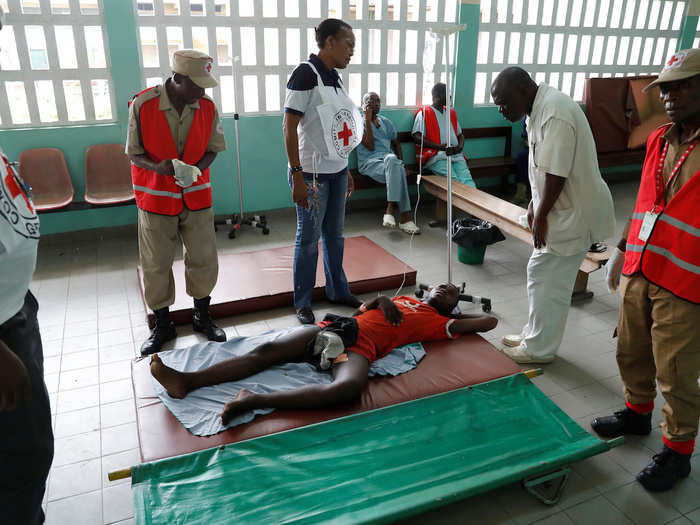- Home
- Law & Order
- The Catholic Church is trying to oust an African dictator - photos and video show priests being beaten in the streets
The Catholic Church is trying to oust an African dictator - photos and video show priests being beaten in the streets
President Joseph Kabila took power of the DRC in 2001 after his father's assassination.

Kabila was supposed to step down after his two-term mandate expired on December 19, 2016, but he stayed on after invoking a controversial law requiring a successor to be elected. This sparked a wave of protests.
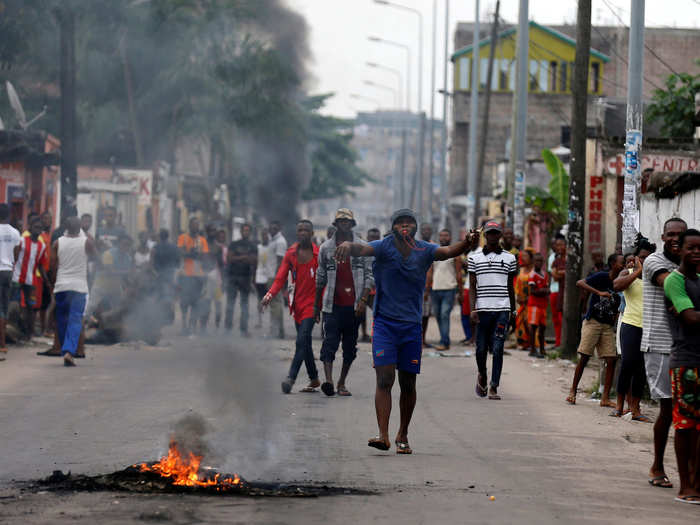
In January 2017, the Catholic Church brokered a deal between Kabila's People’s Party for Reconstruction and Democracy and opposition parties that elections would be held in December 2017 and that Kabila would step down.
In December 2017, Kabila again refused to step down, saying that an election would have to be held at the end of 2018 because the government didn't have enough money.
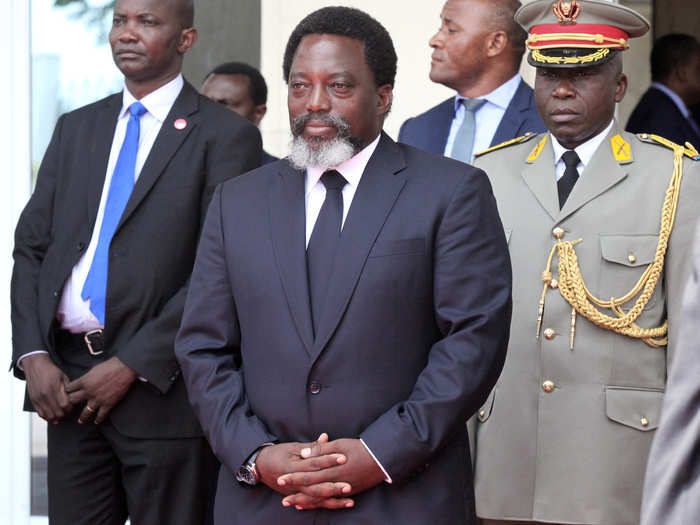
Election officials have even said that, because of continued financial and logistical problems, the election might be even held later than that.
With opposition parties in disarray, the Catholic Church, which had previously tried to stay neutral, organized anti-government protests together with a spiritual group called the Lay Coordination Committee.
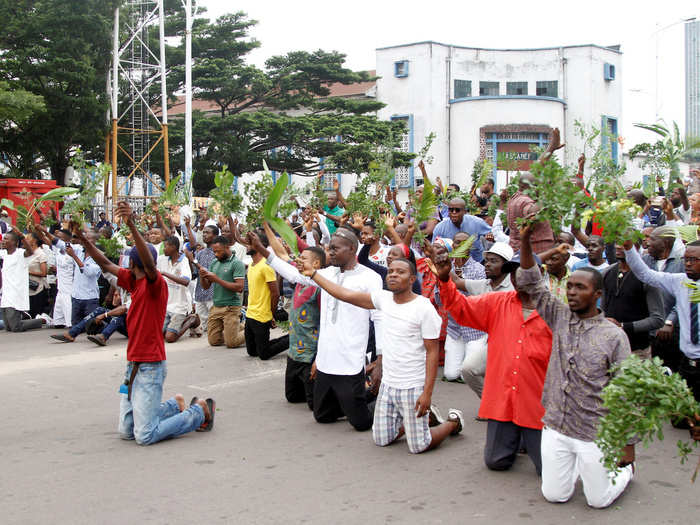
In the first demonstration on December 31, 2017, seven demonstrators were killed by government forces.
On January 21st, another protest was held in which government forces killed 5 more protesters, firing live rounds and tear gas into crowds of demonstrators.
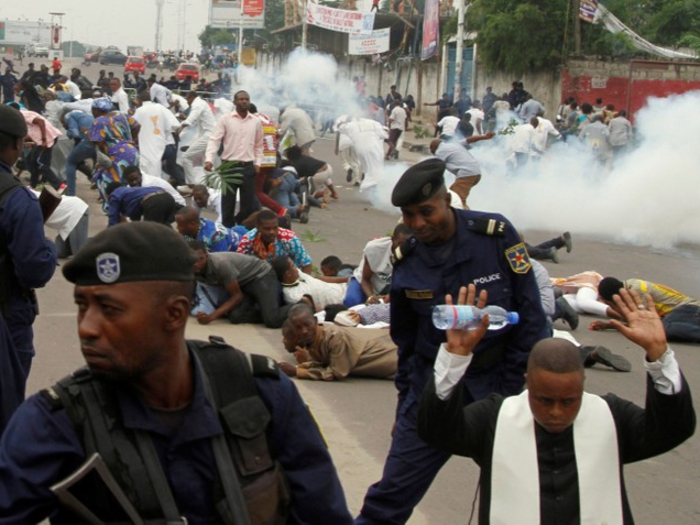
Source: Al Jazeera
But the church and the LCC have not stopped.
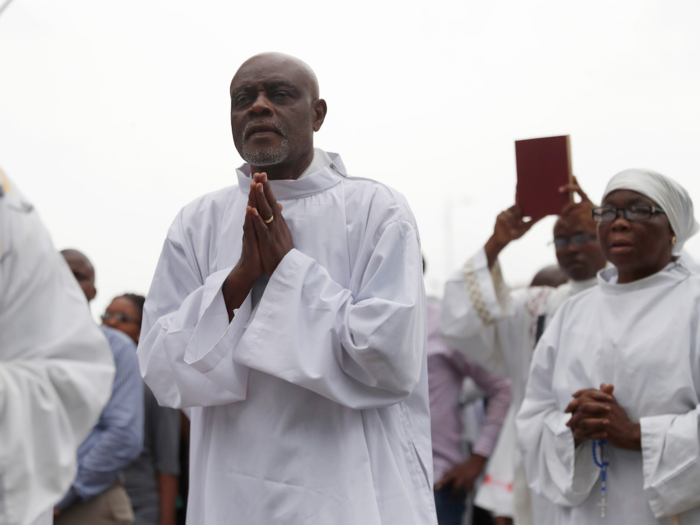
They organized another protest on Sunday after mass, but government forces surrounded the churches that were planning to participate in the demonstrations before the parishioners could even take to the streets.
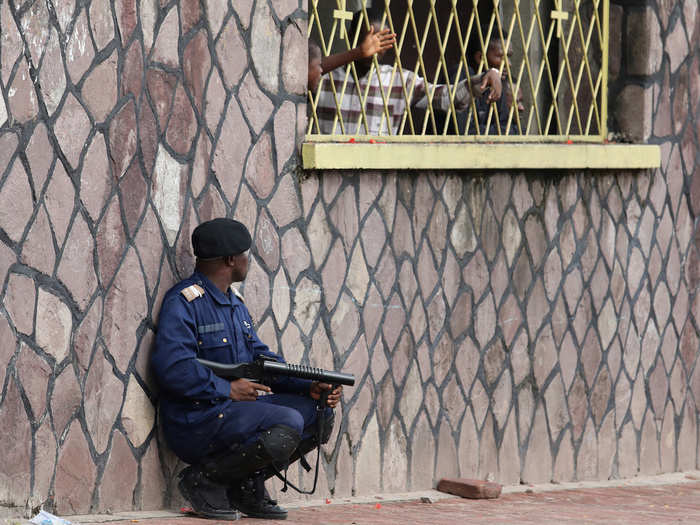
As police confined them, many churchgoers prayed and chanted slogans.
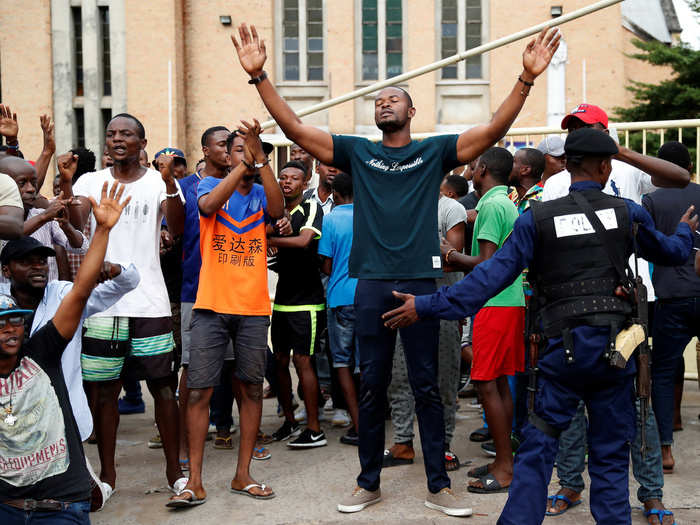
But violence soon erupted.
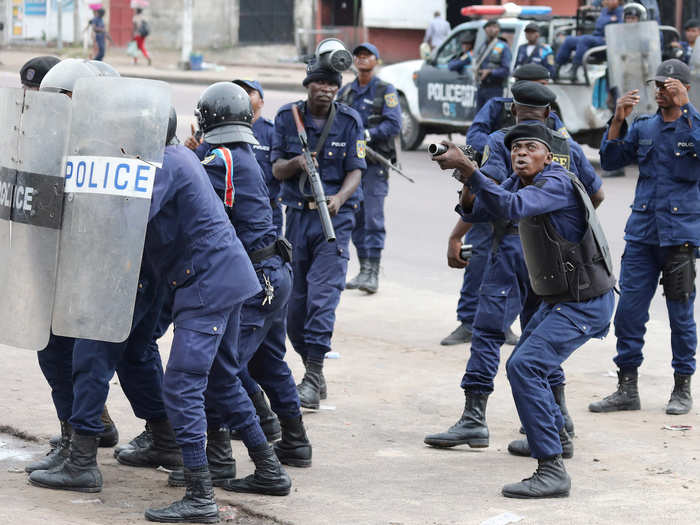
Police again fired live rounds and tear gas into crowds, and even beat, kicked, and arrested priests and protesters who were peacefully marching, which the video below shows.

Source: Jason Stearns
The political violence unfolding in Kinshasa and other cities has also aggravated conflicts in different regions of the country, namely the regions of Kasai and Kivu.
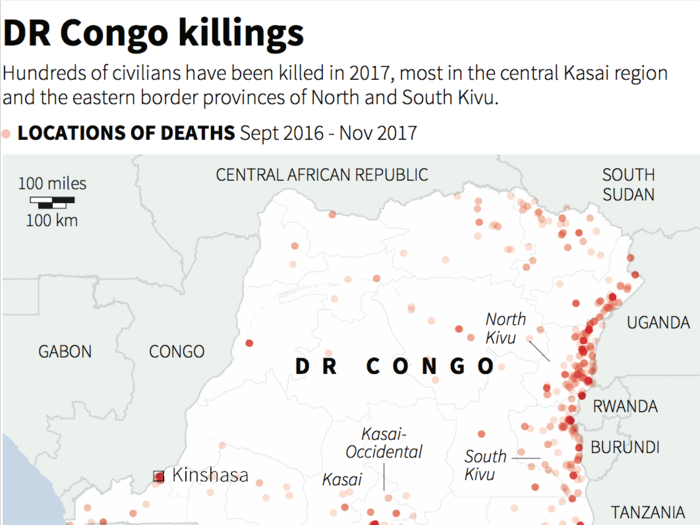
In Kasai, the Congolose military has been battling a militia group called Kamuina Nsapu since August 2016, and in the Kivu, it has been battling an Islamist group called the Allied Democratic Forces since the 1990s.
Source: US News
The fighting between the two sides in Kasai has left more than 3,300 people dead and 1.4 million displaced since August 2016.
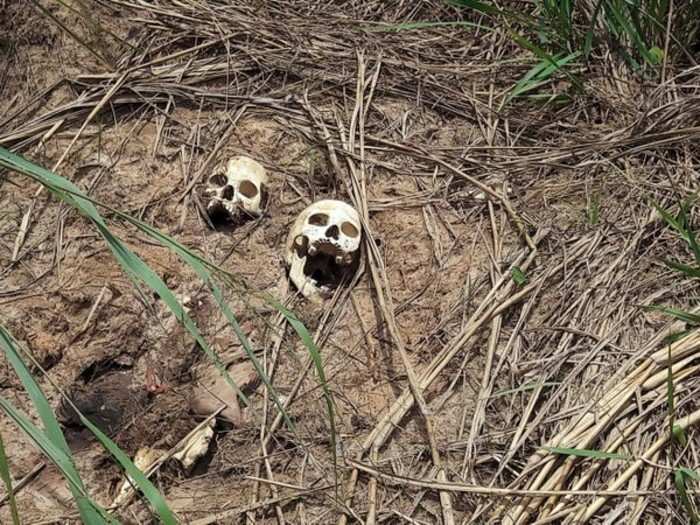
Dozens of mass graves have also been found in the region, which the Congolese military blames on the Kamuina Nsapu militia.
But the UN has also hinted that the Congolese military dug the graves after battling the militia.
Meanwhile in Kivu, the Islamist Allied Democratic Forces killed 15 UN peacekeepers and five Congolese troops in December.

Last week, the Congolese military attacked an ADF base, and gruesomely massacred a number of its fighters.
Between June and November last year, "at least 526 civilians were killed ... at least 1,087 people were abducted or kidnapped for ransom, and there were at least 7 incidents of mass rape," according to Human Rights Watch.
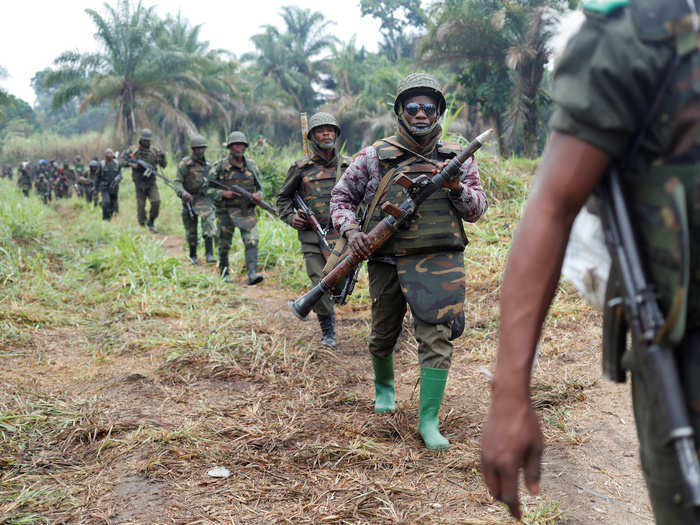
While Kabila has blamed militia groups for much of the violence, his own troops have been accused of carrying out a bulk of the human rights violations, according to Jason Stearns of the Congo Research Group.
With tensions continuing to rise, and Kabila seemingly intent on holding as long he can, only time will tell what the future holds for the DRC.
Source: Human Rights Watch
Popular Right Now
Popular Keywords
Advertisement
